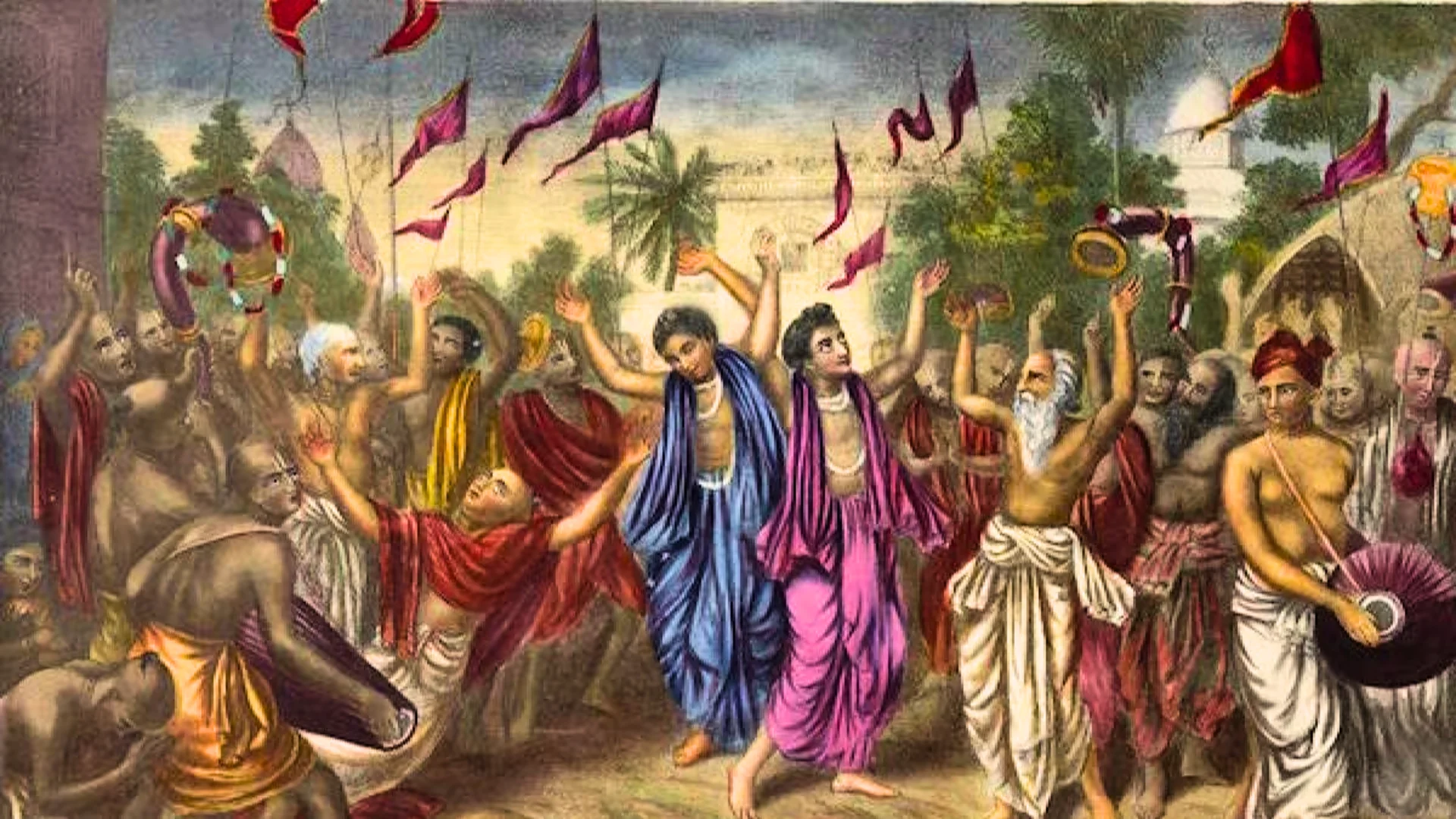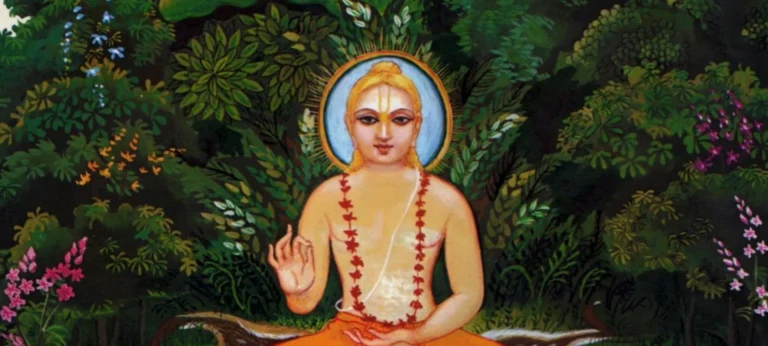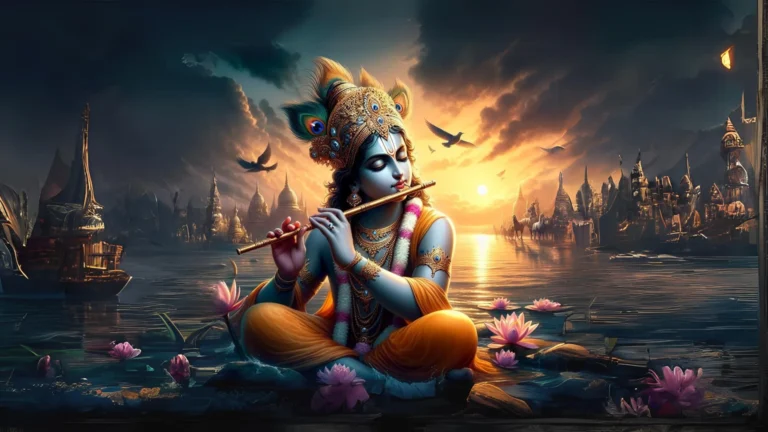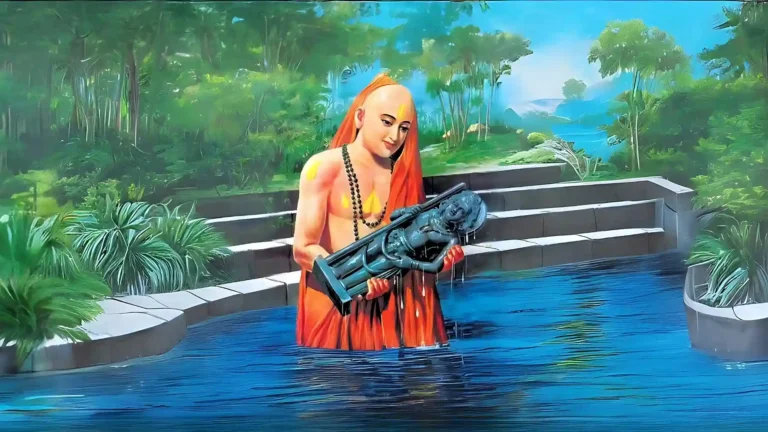Please Like the Blog and Share it for Maximum Reach
Table of Contents
Introduction to Bhakti Movement
Bhakti movement was a mass movement that came into recognition from the 8th century to 16th century. It was the voice of the general population that tread on the path of God together, irrespective of caste, creed, gender or religion.
The Bhakti Movement was an inspirational movement, inspiring the older and younger generations of the country to wake up to their original Self. The credit of reviving the Hindu faith, on Vedic scriptures and gods goes to Sri Adi Shankaracharya.
Later other acharyas came and expanded their theories and movements.
With Sri Chaitanya Mahaprabhu’s advent in Bengal, the Bhakti Movement saw a new surge of devotional mellows. Even as the Iron Age began, people started losing their intelligence to the power of Maya.
Atheism and other religions subscribing to it drowned the general masses into the ocean of ignorance. They started to lose their memory capacity and became far too short-sighted.
Early Days of the Bhakti Movement
Even after Adi Shankara established the Advaita School of Thought, the common man was not able to grapple with the intricacies of the teachings. There arose a great amount of dissatisfaction.
Sri Adi Shankaracharya’s theory now appeared esoteric, inaccessible and far-fetched to the intelligence of the larger population.

The masses were drowning in the pandemonium of new-age tyrants who started taking control over the lives of innocent people. This is when, the land of Bharath witnessed an overwhelming rediscovery phase with the advent of Sri Ramanujacharya and the onset of the Bhakti Movement.
The phase lasted till the departure of the Supreme Lord Sri Chaitanya when Bhakti Movement reached its peak.
Hence, as mentioned in the Bhagavatham, Bhakti Devi reveals that she was born in South India. It indicates the movement of Ramanuja or the foundation of Sri Sampradaya which revolves around Kainkaryam, Prapatti and Dasya Bhava for Sriman Naryana.
This was just the beginning. Before Sri Ramanuja’s advent the 12 Alvars left behind great Tamil-Bhakti works, poems, literature and Bhajans that could easily melt the hearts of devotees.

It is their works that became a great repository of teachings in the Ramanuja Sampradaya. Bhakti, an integral aspect of Sanatana Dharma reappeared in a glorious and heart-touching manner.
It was during this period that the concept of “Ishta Devata” became prominent more than ever.
Bhakti Movement: Impact of the Bhakti Wave
Tales of Sages and their Ishta Devatas, (deity of their heart) became the talk of the common folk of Bharath. In a nutshell, the surge of Bhakti ran through the hearts of millions. Like how the Alvars contributed to the Bhakti Movement in Vaishnavism, Shaivism too saw huge contributions of the 63-Nayanars who sang glories of Lord Shiva in a mood of surrender and love for Him.
The 63 Nayanars had extraordinary lives and set examples of Ideal surrender and love for Lord Shiva. Hence, the Supreme Being could be summoned by the innocent heart. India became a land where the Supreme Being appeared.
He took the forms of Sri Rama, Sri Krishna, Sri Vitthal, Lord Shiva and a host of deities in ways which one can never imagine. These deities offered direct shelter to their devotees.
Theme of the Bhakti Movement

The theme of the Bhakti movement is indeed Bhakti a.k.a pure devotional service unto the Supreme Lord Vishnu, Krishna, Rama, Shiva or Devi. However, this movement was beyond the achievement of Liberation, which is often the theme of other movements like that of Buddhism, Jainism and some schools of Hinduism.
There is another type of liberation which has been my life-long pursuit and keeps me motivated. This liberation is a state “Beyond Moksha.” Sanatana Dharma calls it Bhakti. When pure consciousness is directly experienced as the “other”, it is seen as the all-perfect entity.
Moksha in other schools means dissolving ourselves. However, the sweetness of Bhakti movement was that to maintain an individual identity with regards to that of Bhagavan.
We exist, yet attain liberation. This is the nature of Bhakti or pure devotional service. Devotees exist in a liberated state to serve the Lord and so they maintain an individual identity. Thus, to make the relationships sweeter, we have the 4 Rasas.
To elucidate these 4 Rasas various Acharyas propagated them and lived their lives in accordance with the Bhakti Philosophy. Hence, Bhakti is the highest possibility of humanity as one unit. Sri Ramanujacharya, Madhvacharya, Nimbarkacharya, Vallabhacharya, and Sriman Gauranga Mahaprabhu have great solutions for the common folk.
Bhakti Rejects Moksha
The mood of the Bhakti movement is something like this…
The Supreme Consciousness, which is “I”, the original “Me” comes to our direct experience, as a separate entity. This is the highest state of liberation; Liberation, unimaginable by any stretch of knowledge or Wisdom. It is direct perception beyond the realm of wisdom. In this type of liberation, one need not lose one’s body-mind.
There is no need to merge into the ocean of Consciousness as the Jnanis (followers of Advaita) proclaim. When we see our highest possibility as a separate entity, He remains with us as our doting parent, friends, master (as per your mood or rasa).
Our own innermost self, the supremely intimate aspect stays with us by our side, caring, like a concerned mother cajoles her dear one. What will the feeling be like, can anyone even imagine?
This experience is beyond any experience of liberation. Many devotees have attained that state of being. They continue to exist in Permanence even after their material body fades away. They exist in pure spiritual form in the spiritual realm.
Their original self always exists with the Supreme Being by their side. Bhaktaraj Prahalad is ancient yet the most apt example to illustrate the mood of Bhakti, the love of God for his devotees and vice-versa.
Test your Alignment with the Spiritual Subject Matter (only 7-8 Questions)
The scores generated in this Quiz are relative. There are no right or wrong answers. A percentage towards 100 indicates that you are more aligned to the overall subject matter.
Bhakti: An Inspiration of Spirituality

Bhakti Sages have left their mark on people through their exemplary life, movement, works and teachings. Even today people recall their glory in various states and parts of the world.
Even today, Namasankirtana happens in the streets of India. There are many sages who contributed to the Bhakti movement. They impacted the lives of kings, nawabs, renunciants, courtiers, queens, and even the common man.
They came from various states of India and influenced the inmates of their motherland by writing works in their regional languages and encouraging others to follow the Bhakti Path.
Some of them were:
Goswami Tulsi Das Ji Maharaj
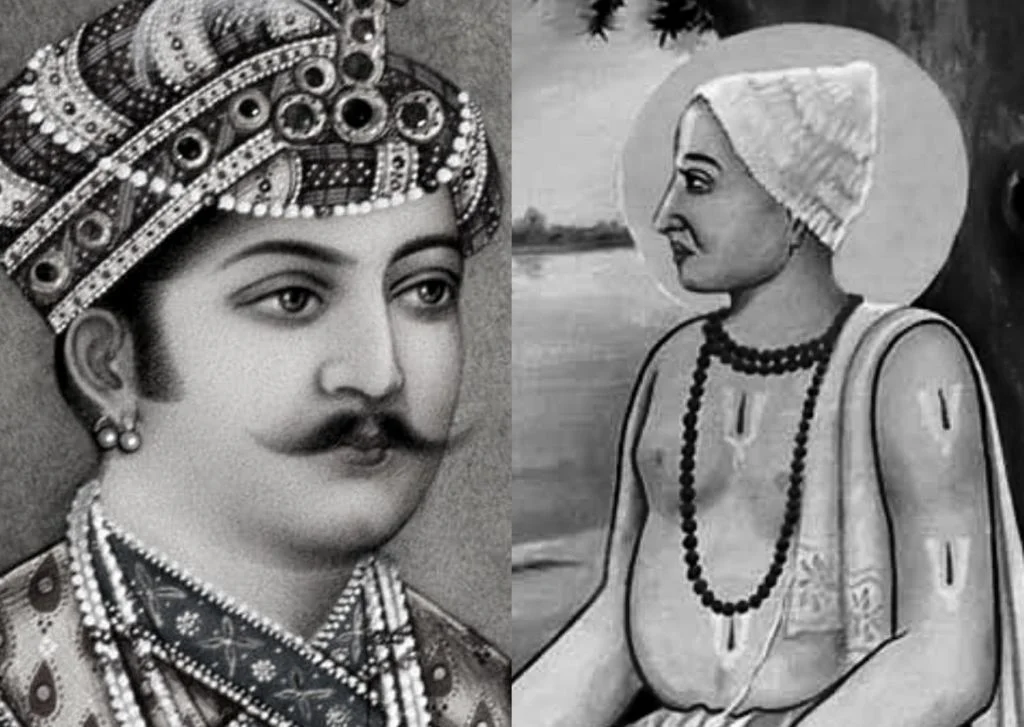
Tulsidasji Goswami Maharaj was the greatest of Rama Bhaktas. He had the great personality of Turning down Offers from the Mughal King Akbar. Due to his Bhakti and spiritual prowess, he proved to the world the power of Bhakti and Love for Sri Rama.
He composed the Hanuman Chalisa for the devotees to get rid of all fears and invoke the blessings of Sri Hanumanji Maharaj.
Sriman Chaitanya Mahaprabhu
None other than an incarnation of Lord Krishna Himself, he descended to distribute the Love of God in Madhurya Bhaav. Sriman Chaitanya Mahaprabhu’s influence led to the formation of the Gaudiya Vaishnava Sampradaya, which propogated the Bhakti Teachings of Madhvacharya. His Hari Nama Sankirtana and maha Mantra Japa are famous world wide.
12 Alvars and 63 Nayanars
12 Alvars are accepted as Bhati idols in Sri Sampradaya. They are representatives of the Vaishnavism sect of Indian Spirituality. 63 Nayanars are known for their devotion or Bhakti for Lord Shiva, in Shaivism.
Acharyas

4 Acharyas include the founder Acharyas like Nimbarka, Vallabhacharya, Ramanuja and Madhwa. Nimbarka distributed the Love of Radha Krishna and brought to light Bhakti in the mood of Madhurya (Conjugal Love).
On the other hand, devotion in the Vatsalya Ras (Parental Affection) for Bala Gopala was established by Sri Vallabhacharya. He is the Acharya of the Pushti Margam or Vallabha Sampradaya.
Sant Tukaram
The Great Bhakti Sage, Sant Tukaram and His abhangs became famous in the state of Maharashtra. His Bhakti Mood, poems and personality influenced the greatest of all Kings and Marathas, Chhatrapati Shivaji Maharaja. People witnessed, with their naked eyes that Sant Tukaram ascended the divine aircraft of Vaikuntha with his mortal coils!
Tyagaraja and Narsingh Mehta
Tyagaraja through his power of Rama Bhakti and Rama Nama Sadhana, got direct Darshan of Lord Rama Himself. Narsingh Mehta was a direct eye witness to the Rasa Leela of Srimati Radharani and Sri Krishna of Vrindavana.
His Bhakti drew the Lord to save him from burning his own hands!
Mirabai

Mirabai became an inspiration for women in Rajasthan and worldwide. People believe that she is a queen of Lord Krishna of Dwarika. Her life became an example of total renunciation and surrender towards the Lord.
Miracles were a common thing in the divine life of Mirabai.
Ramanandacharya and Sant Kabir
Sri Ramanada founded the Ramananda Sampradaya and became famous as the Bhakti Sage of His time. He is considered to be an incarnation of Lord Sri Rama Himself. I, Damodar Das belong to the Sampradaya of Sri Ramanandacharya and owe my spiritual source to this Avatara of Lord Rama and my Gurudeva Sri Lallandasji Maharaj, an ardent servant of his Gurudeva Sri Devraha Babaji; both Brahma Rishis of the highest kind.
Sant Kabir Das too became Sri Ramanandacharya’s ardent follower.
The 6 Goswamis of Vrindavan
6 Goswamis gave rise to a new surge of devotion and established great significance of Vrindavan Dham. They followed the instructions of Sriman Chaitanya Mahaprabhu and wrote detailed works describing Bhakti in its most pristine form.
Their lives are worth Smarana (introspecting) and devotees can gain spiritual insight and unconditional grace.
Mahapurushya Sankardeva

Mahapurushya Sankardeva initiated the Bhakti Movement in Assam. He translated the great Scripture Srimad Bahagvatham in Assam so that the citizens could easily delve deeper into the ocean of Bhakti. His movement put an end to Tantrik practices, human and animal sacrifices.
Concluding the Mood of Bhaktas
So, Who can forget the tales of how Goswami Tulsidas met Sri Hanumanji, Sri Rama and Sri Laxmana in person? The tales of Sri Thyagaraja, the singing saint of Tamil Nadu’s Thiruvarur district and his rendezvous with Sri Rama can never be forgotten.
They have the capacity to drench one’s heart with pure love for God. Who can forget Sri Mirabai’s tryst with her eternal paramour Lord Sri Krishna of Dwaraka?
What about Lord Gauranga Mahaprabhu in the mood of Sri Radha pining for union with his beloved Krishna of Vrindavan.
So, the list is endless.
Personally Bhakti Alone is the acme of all spiritual practices and all other spiritual practices in the field of Raja Yoga, Hatha Yoga, Karma Yoga, Kriya Yoga, Jnana Yoga, Advaita etc have to conclude in pure Bhakti, the final destination of all life.
Please Like the Blog and Share it for Maximum Reach

